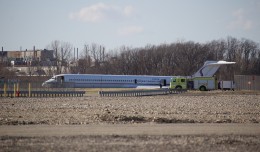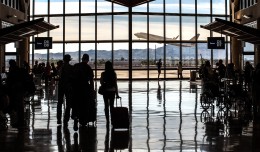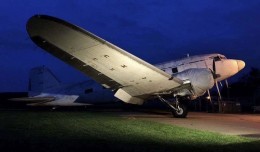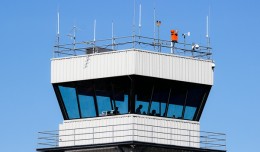Ebola has been front page news for the last several weeks, and until my recent discussion with a Centers for Disease Control (CDC) medical officer experienced in controlling the international spread of infections, I had been concerned about my personal 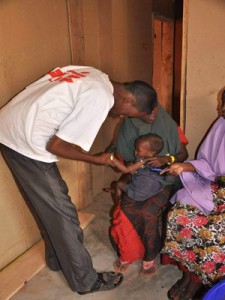 well being as well. After our conversation, I was reminded of the realities and able to place my fears aside and gained empathy for the people of Africa where this disease is taking hold. For us, the well established health care system and supporting government agencies here in the United States and other first world countries, Ebola will be an extremely tiny threat. In third world countries, because of the traditions, the lack of knowledge, and the lack of health care, Ebola will be devastating.
well being as well. After our conversation, I was reminded of the realities and able to place my fears aside and gained empathy for the people of Africa where this disease is taking hold. For us, the well established health care system and supporting government agencies here in the United States and other first world countries, Ebola will be an extremely tiny threat. In third world countries, because of the traditions, the lack of knowledge, and the lack of health care, Ebola will be devastating.
Air travel can be an anxiety driven event for many people, and the thought of someone on the airplane who might be carrying Ebola further exasperates one’s fears. This information on what Ebola is and what are the risks to the traveling public should alleviate fears of the traveling public.
What is Ebola?
Ebola virus disease (EVD) is a relatively rare disease carried by animals (probably fruit bats and non-human primates) which has, until now, only been seen in East and Central Africa.
EVD is only transmitted by infected bodily fluids; blood, saliva, sweat, breast milk, and semen. It is not spread by the airborne transmission, and therefore the risk of infection is quite limited. The disease has spread significantly in Liberia, Guinea, and Sierra Leone – now over 6000 cases – because in many patients it causes vomiting and diarrhea. These infectious materials along with the other bodily fluids readily come in contact with the family members who are caring for the sick or have washed the deceased body prior to funeral as had been traditionally done for centuries. The lack of knowledge and the customs in these countries place the citizens in high risk by putting them in close physical contact with the living and the dead who are infectious.
The years of civil war in this area have left hospitals and health workers in very limited supply, and ill equipped to handle any serious infectious disease outbreak, often lacking even the basics of masks and gloves and in some cases running water. The further taxing of these weakened public health care systems is also a risk to those who are sick but not infected with Ebola. Over the next few months we will have reasonable estimates of the number of people that have died from Ebola. Those numbers will not reflect the people who died from other causes that would have been treatable had services not been diverted for the Ebola crisis.
Many countries and NGO’s have been sending aid workers and doctors to the effected regions in a humanitarian effort. Unfortunately, these workers have been met with resistance; the protective clothing gives the workers a threatening appearance, and the villagers link the arrival of Ebola with the arrival of the aid workers. Both are unfortunate and understandable, this is slowing the containment of the crisis.
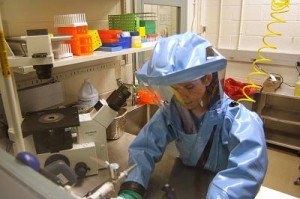 In the neighboring countries of Nigeria and Ghana, hospitals and health services are better equipped and staffed. The infection brought in by travelers was quickly arrested after these handful of cases were recognized. This demonstrated that these outbreaks can be controlled or prevented altogether by effective health care services.
In the neighboring countries of Nigeria and Ghana, hospitals and health services are better equipped and staffed. The infection brought in by travelers was quickly arrested after these handful of cases were recognized. This demonstrated that these outbreaks can be controlled or prevented altogether by effective health care services.
Ebola and airline travel
The rapid speed of jet airliners and the large capacities of the intercontinental wide-bodies make the rapid and distant spread of disease an issue. Although World Health Organization (WHO) has recognized the Ebola outbreak as a “Public Health Event of International Concern” (PHEIC), they do not recommend that flights to or from the affected countries be suspended. Suspending access would limit the ability to deliver urgently needed supplies and staff and would have little effect on chances of further spread. Those that have been contracting the disease typically do not have the financial resources for airline travel, and if they do not have any symptoms, they are not at all infectious. And those that are infectious are likely already too sick to travel. Some airlines have have temporarily discontinued flights to these areas, likely due to market response. In addition, there is a concern of the availability to health care for flight staff that may become sick. With the collapse of the limited health care systems in these countries due to the crisis, the airlines realize the risk of not being able to obtain even basic health care services for general illnesses and injury of their crews.
Restricting passengers with Ebola from traveling
Screening travelers from affected countries has been undertaken by the countries with the assistance from CDC personnel sent there. Because persons infected by EVD are only contagious once a fever develops, they can be screened by using infra-red sensitive guns which do not require close contact with the travelers. Fever screening has been used in the past both for departing and arriving passengers and crew during pandemic influenza and SARS outbreaks.
In regard to the Ebola crisis, this is not a very efficient way of identifying people who should not be flying. Screening is limited by the very minute number of travelers likely to be infected with EVD. Thousands more travelers will have elevated temperatures due to the flu virus, respiratory disease, or just being held for several hours in a poorly ventilated air terminal, and this will complicate the identification of those who are infectious with Ebola.
So most people who test positive for fever will not have EVD – they will be ‘false-positives’. This false-positive rate will be many times higher than the rate of people who do have EVD, and the ‘true-positive’ rate will require tens of thousands of travelers to be more carefully assessed to exclude even one case of EVD. In a similar situation in Canada where over a million people were fever-screened during the SARS outbreak, not one single case of SARS was found during the screening.
At this time, no special screening has been set up for travelers arriving in the US from the affected countries. Here the problem of screening is further complicated because few flights from Africa to the US are direct with most passengers connecting in Europe and the Gulf States, making it more complex to identify which arriving flights should be screened.
The response when a traveler with Ebola virus arrives in the United States
It is not surprising that we have already seen one traveler from abroad develop EVD in this country, and there may well be more on the way. Once diagnosed, the CDC and Customs and Boarder Protection will work backwards to identify the airplanes and passengers that were in contact with this traveller and assess the risk. Because this is not an easily transmittable disease, and one that is not at all transmittable unless symptoms are present, generally the risk to the traveling public even for those seated in the vicinity of the infected traveler is extraordinarily low. Those that were in contact with the traveler will be monitored, and prompt effective treatment will be provided if they are diagnosed with EVD.
Those that do arrive in the United States (or other first world countries) with EVD appear to have a better than 80% chance of surviving the infection. Like AIDS, one does not die from EVD but rather from the complications. Without effective monitoring of a patient’s fluids and salts levels, the survival rate immediately drops to 30%. With proper precautions, the risk of infection to the health care workers in the United States is very low, and the survivability rate of those who are infected is high.
The quarantining of an airplane or the passengers on a flight with a person infected with EVD is not within the scope of the FAA’s or CDC’s actions. If this was even warranted, the FAA or CDC would advise law enforcement agencies on the proper course of action in an advisory role. But as you can surmise from the information provided, the current course of action undertaken by the CDC and other health agencies is effective and logical.
Until recently, the public perception of the Ebola crisis was one that was not being addressed and a considerable threat to their safety. Prior to making the headlines, Ebola had been a top concern for officials at the CDC, WHO, and NGOs like Médecins Sans Frontières. These public policy and health professionals have formulated ideas that have been implemented both here and Africa to minimize the threat and to provide for an effective humanitarian response. Customs and Boarder Protection offices and our well trained EMS staff around the country are prepared and have properly responded to the handful of cases that have and will appear in the United States.
An estimation of the number of EVD cases in Africa included a high range of one million. The hundreds of thousands expected to be ill with EVD by year’s end will require an exceptional humanitarian effort; one that is well underway. The outbreak, once contained, will have been devastating for these countries and their families. But for our families here at home, the only risk we face is unsubstantiated panic.
David J. Williams is a former airline Captain and currently involved with aviation safety.



